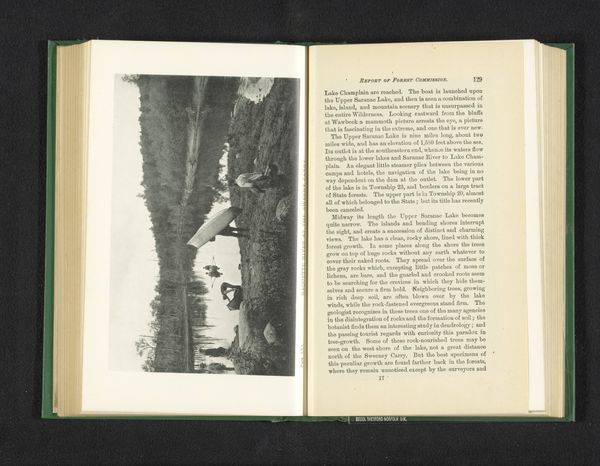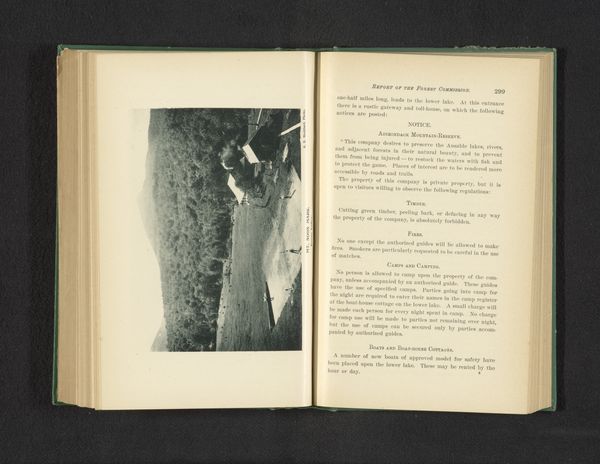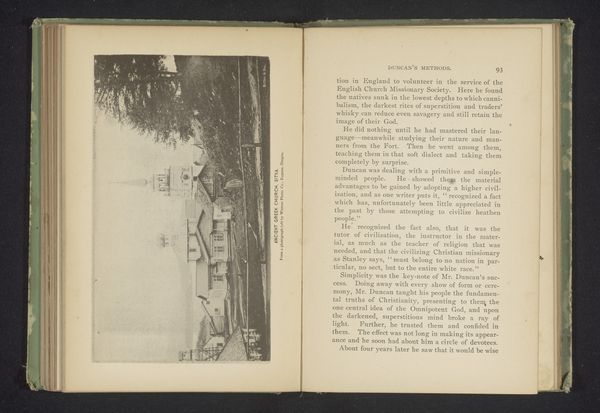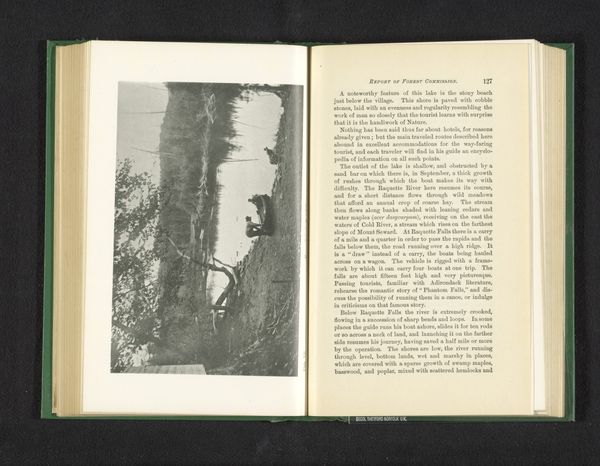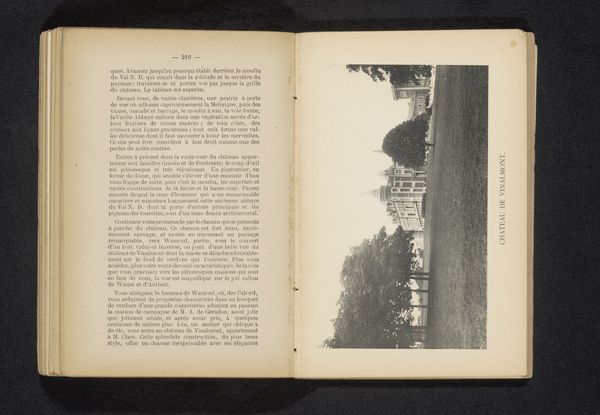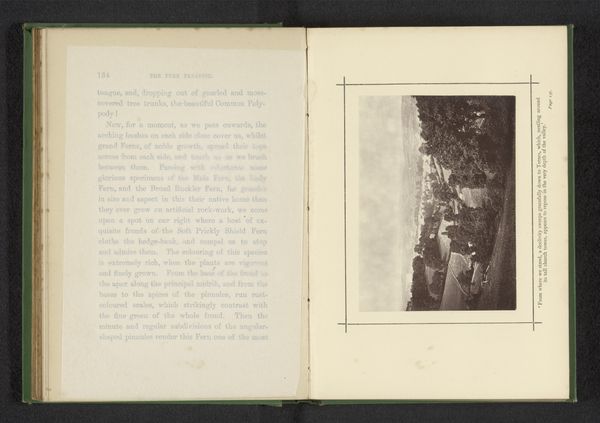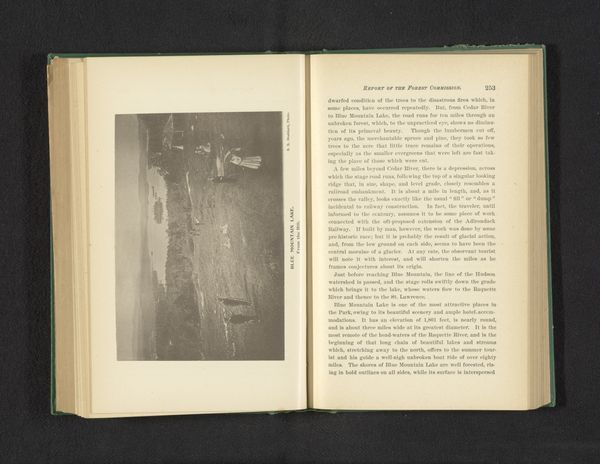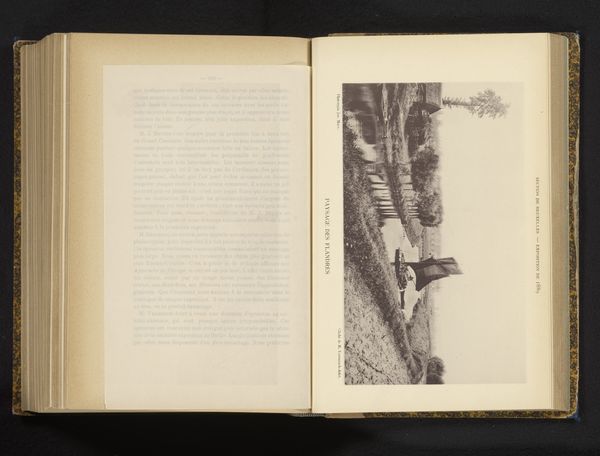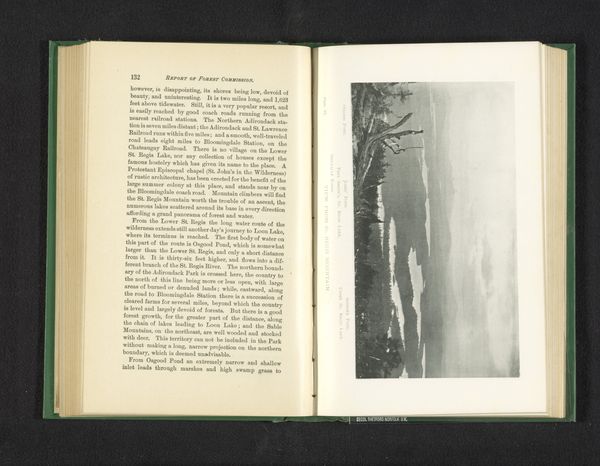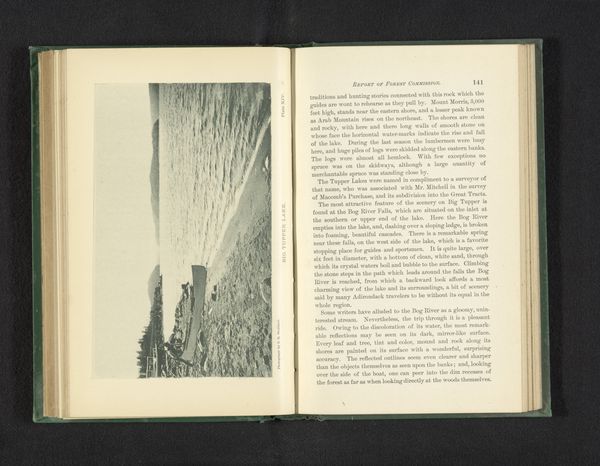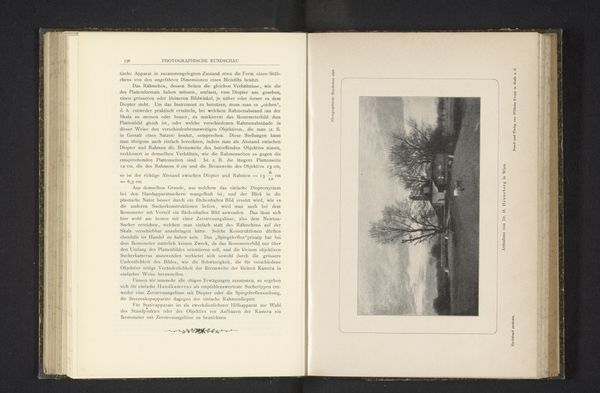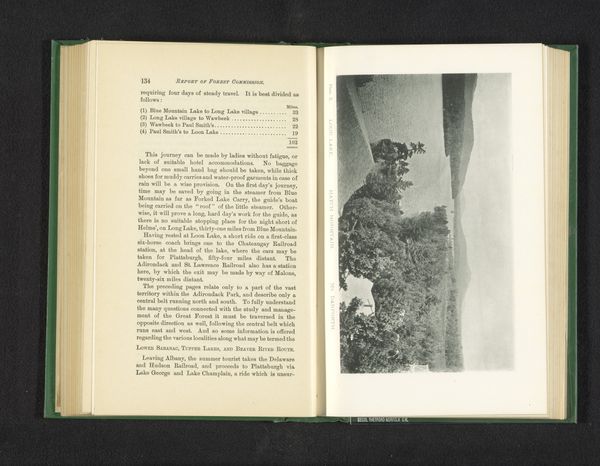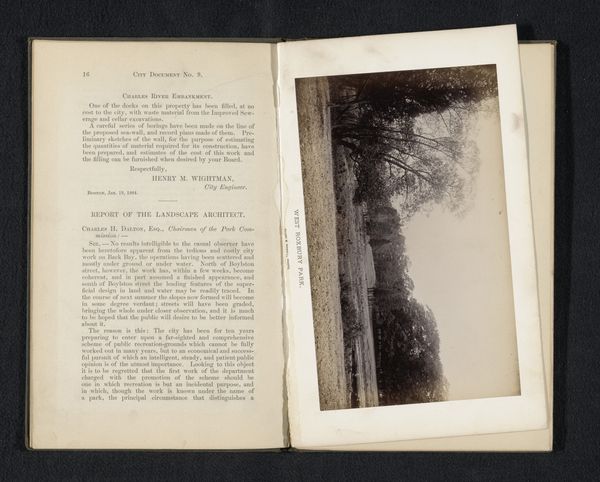
print, photography, albumen-print
#
lake
# print
#
landscape
#
photography
#
cityscape
#
albumen-print
Dimensions: height 100 mm, width 161 mm
Copyright: Rijks Museum: Open Domain
Editor: Here we have Seneca Ray Stoddard’s "Chateaugay Lake," an albumen print from 1893, displayed within the leaves of a book. I’m immediately struck by how the photograph seems to document the taming of the wilderness for leisure. How do you see this piece? Curator: As a materialist, I see not a simple landscape, but an artifact deeply embedded in its social and economic context. Consider the albumen print itself: its production relied on industrial processes, egg whites, and the global trade networks of the late 19th century. How does Stoddard's choice of this specific process influence the way we perceive the depicted scene of nature? Editor: That's fascinating. It does give it a certain removed quality, like we're observing it from a distance, which aligns with the tourist gaze you mentioned. The book format adds another layer. Curator: Precisely. This photograph is contained *within* the leaves of a book, probably a travel guide for the burgeoning tourism industry. What’s the relationship between this image and the development of recreational industries that were being made newly accessible? The railroad would have delivered many people. Editor: Right, it wasn't just about preserving nature, but about profiting from it. Is there a contrast in play with this view into nature within a manufactured product? Curator: Precisely. And think of the labor involved, both in capturing the image and producing the print. Stoddard was part of a commercial system; his work, in turn, encourages more commercialization through tourism. It creates a demand for consumerism and manufactured products that put profits above concerns for landscape stewardship. Editor: That definitely shifts my perspective. I hadn’t considered how much this image speaks to larger issues of commodification. It highlights the often unseen networks that enabled the viewing and experiencing of landscape. Curator: Exactly. So next time, instead of seeing just a serene lake, maybe we should also look for traces of labor, consumption, and the ever-evolving relationship between humanity and the environment in the Adirondacks.
Comments
No comments
Be the first to comment and join the conversation on the ultimate creative platform.
